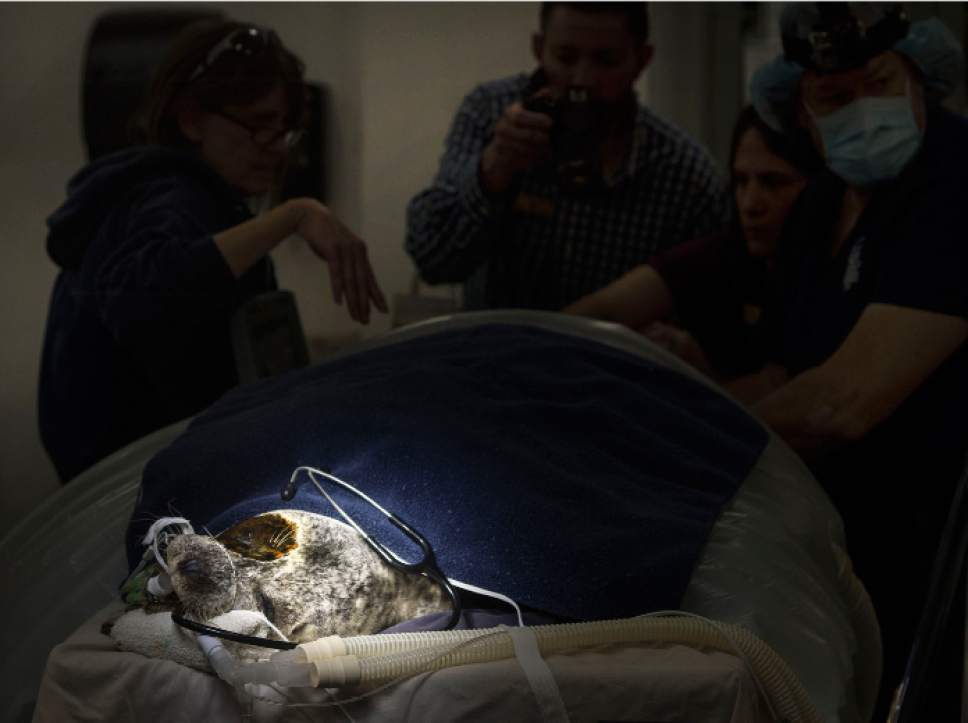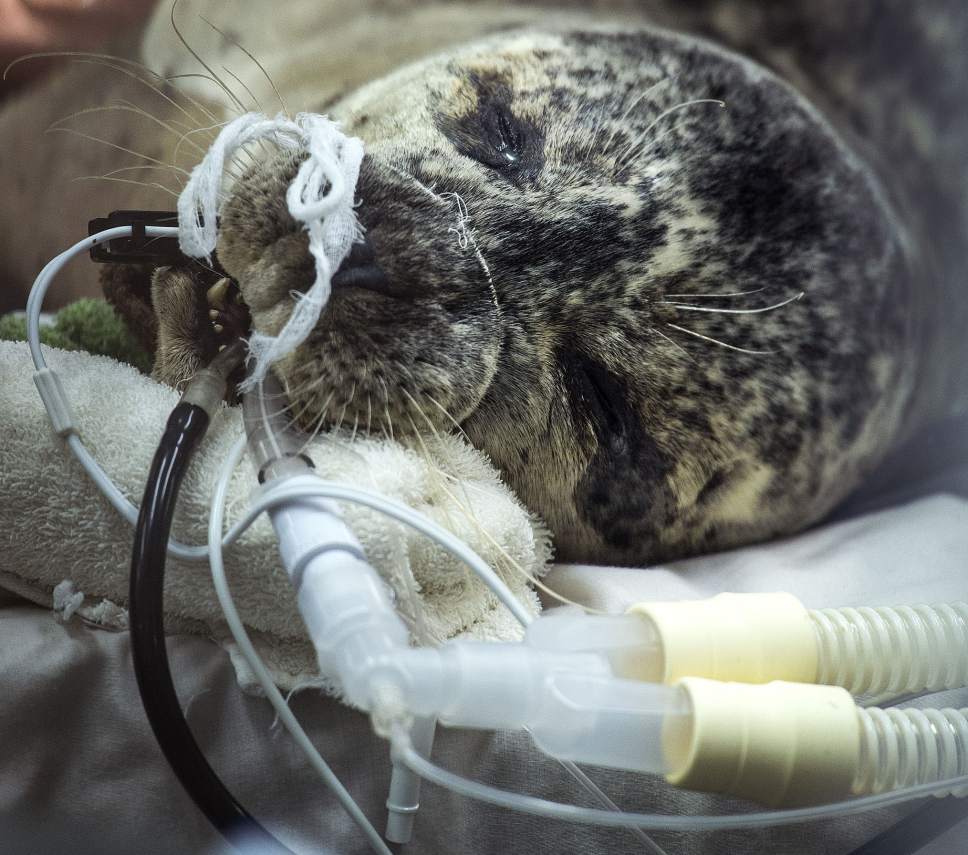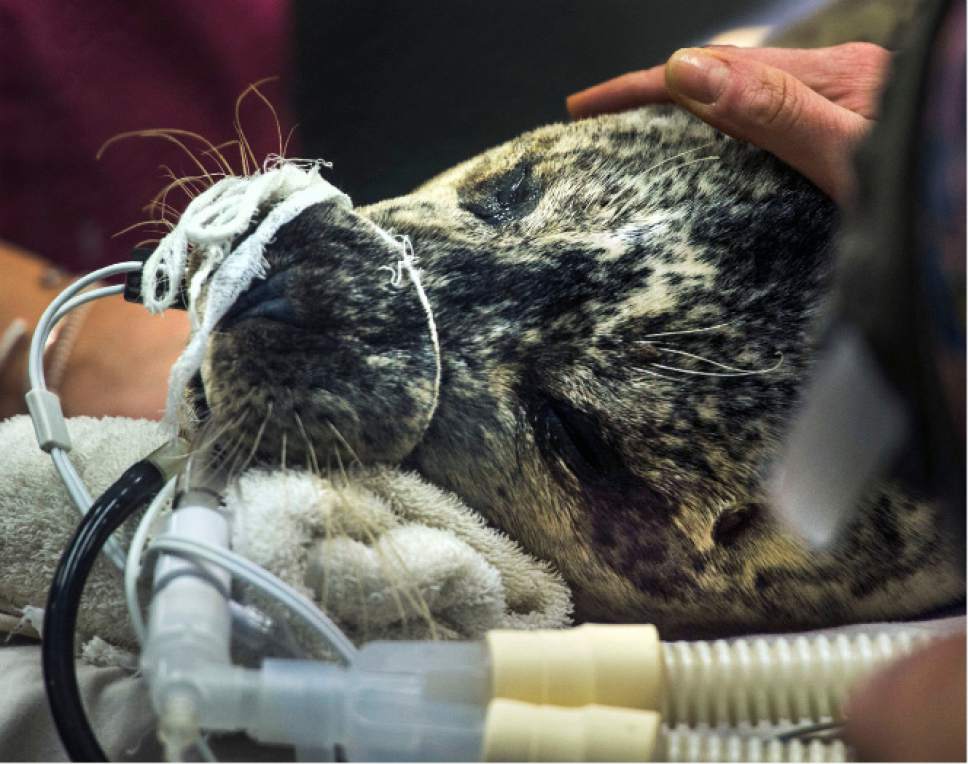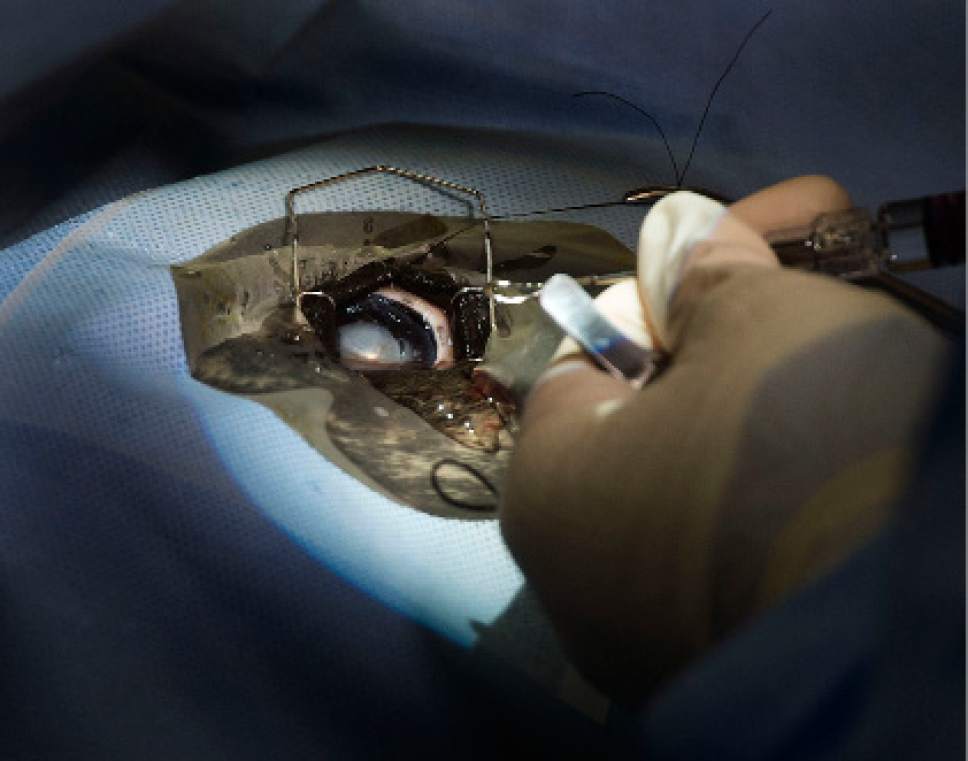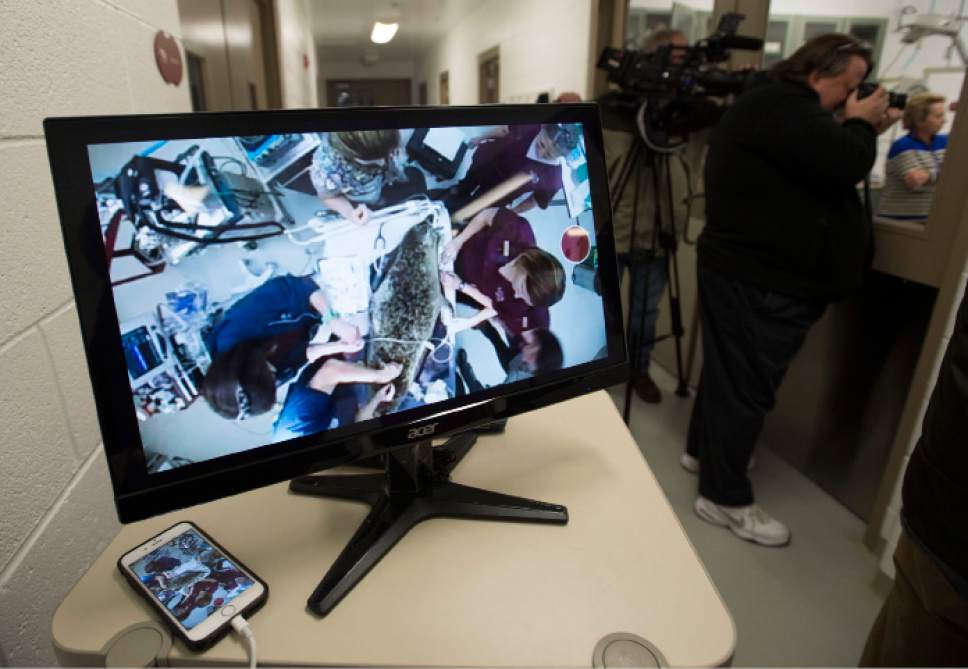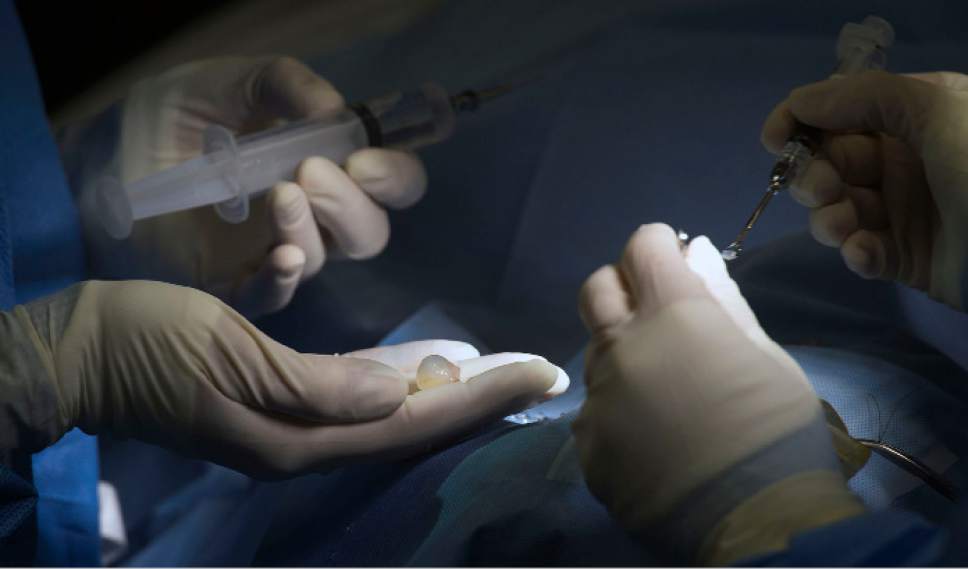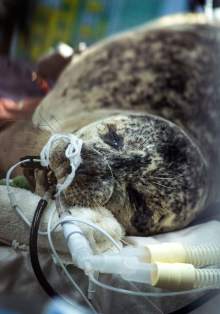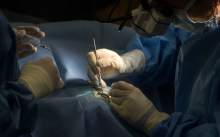Steve Griffin / The Salt Lake Tribune
Surgery specialists from Florida join a Hogle Zoo team as they perform cataract surgery on
Steve Griffin | The Salt Lake Tribune
Surgery specialists from Florida join a Hogle Zoo team as they perform cataract surgery on
Steve Griffin / The Salt Lake Tribune
Surgery specialists from Florida join a Hogle Zoo team as they perform cataract surgery on
Steve Griffin / The Salt Lake Tribune
Surgery specialists from Florida join a Hogle Zoo team as they perform cataract surgery on
Steve Griffin / The Salt Lake Tribune
Specialists from Florida join a Hogle Zoo team as they perform cataract surgery on zoo res
Steve Griffin / The Salt Lake Tribune
Specialists from Florida join a Hogle Zoo team as they perform cataract surgery on zoo res
Steve Griffin / The Salt Lake Tribune
Zoo resident Nika, a 13-year-old harbor seal's, keepers keep a close eye on her as they wa
Steve Griffin / The Salt Lake Tribune
Surgery specialists from Florida join a Hogle Zoo team as they perform cataract surgery on
Steve Griffin / The Salt Lake Tribune
An overhead camera broadcasts surgery as specialists from Florida join a Hogle Zoo team as
Steve Griffin / The Salt Lake Tribune
A surgical team member holds a cataract and lens, that was just removed from the right eye
Steve Griffin / The Salt Lake Tribune
Surgery specialists from Florida join a Hogle Zoo team as they perform cataract surgery on zoo resident Nika, a 13-year-old harbor seal, at the care center at the Hogle Zoo in Salt Lake City Thursday December 1, 2016. Keepers and vet staff have seen the cataracts in her eye. They began developing in one eye first and then the other. The animal eye surgeon and pinniped (seals and sea lions) anesthesiologist are in town from Florida to help because it is tricky to do anesthesia on pinnipeds because of their complicated breathing mechanism. The plan is to remove the cataracts and have Nika recover in a holding room that is part of her enclosure at the zoo. Nikki will need to stay out of the water for about three weeks to heal.
Steve Griffin | The Salt Lake Tribune
Surgery specialists from Florida join a Hogle Zoo team as they perform cataract surgery on zoo resident Nika, a 13-year-old harbor seal, at the care center at the Hogle Zoo in Salt Lake City Thursday December 1, 2016. Keepers and vet staff have seen the cataracts in her eye. They began developing in one eye first and then the other. The animal eye surgeon and pinniped (seals and sea lions) anesthesiologist are in town from Florida to help because it is tricky to do anesthesia on pinnipeds because of their complicated breathing mechanism. The plan is to remove the cataracts and have Nika recover in a holding room that is part of her enclosure at the zoo. Nikki will need to stay out of the water for about three weeks to heal.
Steve Griffin / The Salt Lake Tribune
Surgery specialists from Florida join a Hogle Zoo team as they perform cataract surgery on zoo resident Nika, a 13-year-old harbor seal, at the care center at the Hogle Zoo in Salt Lake City Thursday December 1, 2016. Keepers and vet staff have seen the cataracts in her eye. They began developing in one eye first and then the other. The animal eye surgeon and pinniped (seals and sea lions) anesthesiologist are in town from Florida to help because it is tricky to do anesthesia on pinnipeds because of their complicated breathing mechanism. The plan is to remove the cataracts and have Nika recover in a holding room that is part of her enclosure at the zoo. Nikki will need to stay out of the water for about three weeks to heal.
Steve Griffin / The Salt Lake Tribune
Surgery specialists from Florida join a Hogle Zoo team as they perform cataract surgery on zoo resident Nika, a 13-year-old harbor seal, at the care center at the Hogle Zoo in Salt Lake City Thursday December 1, 2016. Keepers and vet staff have seen the cataracts in her eye. They began developing in one eye first and then the other. The animal eye surgeon and pinniped (seals and sea lions) anesthesiologist are in town from Florida to help because it is tricky to do anesthesia on pinnipeds because of their complicated breathing mechanism. The plan is to remove the cataracts and have Nika recover in a holding room that is part of her enclosure at the zoo. Nikki will need to stay out of the water for about three weeks to heal.
Steve Griffin / The Salt Lake Tribune
Specialists from Florida join a Hogle Zoo team as they perform cataract surgery on zoo resident Nika, a 13-year-old harbor seal, at the care center at the Hogle Zoo in Salt Lake City Thursday December 1, 2016. Keepers and vet staff have seen the cataracts in her eye. They began developing in one eye first and then the other. The animal eye surgeon and pinniped (seals and sea lions) anesthesiologist are in town from Florida to help because it is tricky to do anesthesia on pinnipeds because of their complicated breathing mechanism. The plan is to remove the cataracts and have Nika recover in a holding room that is part of her enclosure at the zoo. Nikki will need to stay out of the water for about three weeks to heal.
Steve Griffin / The Salt Lake Tribune
Specialists from Florida join a Hogle Zoo team as they perform cataract surgery on zoo resident Nika, a 13-year-old harbor seal, at the care center at the Hogle Zoo in Salt Lake City Thursday December 1, 2016. Keepers and vet staff have seen the cataracts in her eye. They began developing in one eye first and then the other. The animal eye surgeon and pinniped (seals and sea lions) anesthesiologist are in town from Florida to help because it is tricky to do anesthesia on pinnipeds because of their complicated breathing mechanism. The plan is to remove the cataracts and have Nika recover in a holding room that is part of her enclosure at the zoo. Nikki will need to stay out of the water for about three weeks to heal.
Steve Griffin / The Salt Lake Tribune
Zoo resident Nika, a 13-year-old harbor seal's, keepers keep a close eye on her as they watch surgery specialists from Florida and the Hogle Zoo perform cataract surgery, at the care center at the Salt Lake City zoo Thursday December 1, 2016. Keepers and vet staff have seen the cataracts in her eye. They began developing in one eye first and then the other. The animal eye surgeon and pinniped (seals and sea lions) anesthesiologist are in town from Florida to help because it is tricky to do anesthesia on pinnipeds because of their complicated breathing mechanism. The plan is to remove the cataracts and have Nika recover in a holding room that is part of her enclosure at the zoo. Nikki will need to stay out of the water for about three weeks to heal.
Steve Griffin / The Salt Lake Tribune
Surgery specialists from Florida join a Hogle Zoo team as they perform cataract surgery on zoo resident Nika, a 13-year-old harbor seal, at the care center at the Hogle Zoo in Salt Lake City Thursday December 1, 2016. Keepers and vet staff have seen the cataracts in her eye. They began developing in one eye first and then the other. The animal eye surgeon and pinniped (seals and sea lions) anesthesiologist are in town from Florida to help because it is tricky to do anesthesia on pinnipeds because of their complicated breathing mechanism. The plan is to remove the cataracts and have Nika recover in a holding room that is part of her enclosure at the zoo. Nikki will need to stay out of the water for about three weeks to heal.
Steve Griffin / The Salt Lake Tribune
An overhead camera broadcasts surgery as specialists from Florida join a Hogle Zoo team as they perform cataract surgery on zoo resident Nika, a 13-year-old harbor seal, at the care center at the Hogle Zoo in Salt Lake City Thursday December 1, 2016. Keepers and vet staff have seen the cataracts in her eye. They began developing in one eye first and then the other. The animal eye surgeon and pinniped (seals and sea lions) anesthesiologist are in town from Florida to help because it is tricky to do anesthesia on pinnipeds because of their complicated breathing mechanism. The plan is to remove the cataracts and have Nika recover in a holding room that is part of her enclosure at the zoo. Nikki will need to stay out of the water for about three weeks to heal.
Steve Griffin / The Salt Lake Tribune
A surgical team member holds a cataract and lens, that was just removed from the right eye of zoo resident Nika, a 13-year-old harbor seal, at the care center at the Hogle Zoo in Salt Lake City Thursday December 1, 2016. Specialists from Florida joined a Hogle Zoo team as they removed cataracts during surgery. Keepers and vet staff have seen the cataracts in her eye. They began developing in one eye first and then the other. The animal eye surgeon and pinniped (seals and sea lions) anesthesiologist are in town from Florida to help because it is tricky to do anesthesia on pinnipeds because of their complicated breathing mechanism. The plan is to remove the cataracts and have Nika recover in a holding room that is part of her enclosure at the zoo. Nikki will need to stay out of the water for about three weeks to heal.


